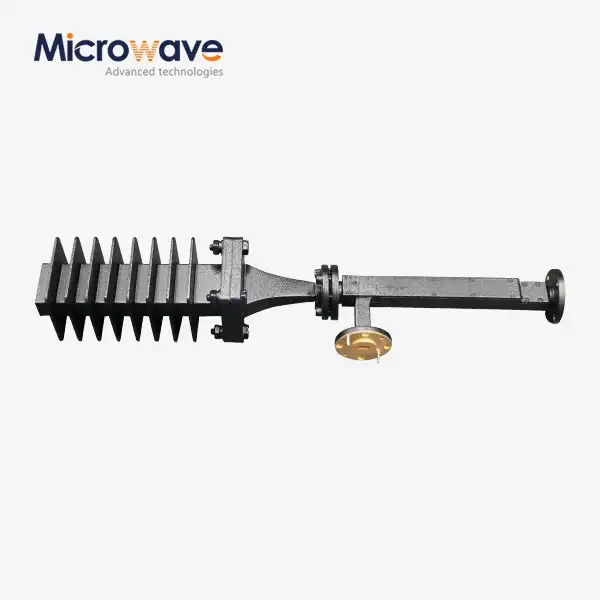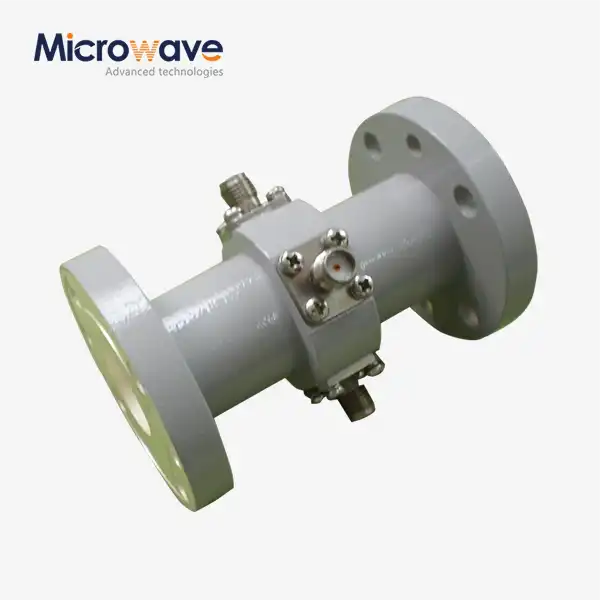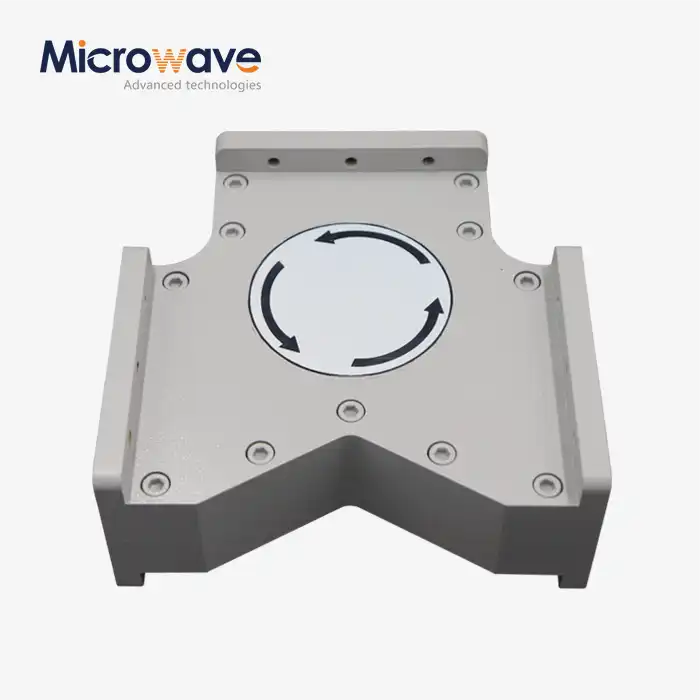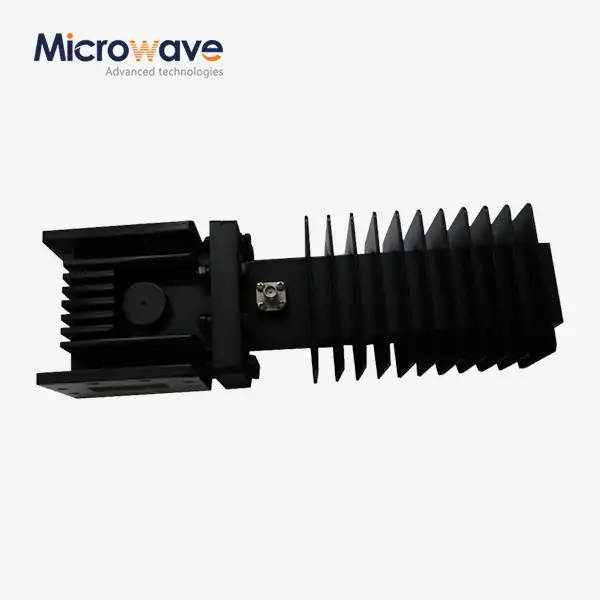Why Do MMDS Transmitting Antennas Excel in High-Frequency Signal Handling?
Multi-channel Multipoint Distribution Service (MMDS) technology represents a critical component in modern telecommunications infrastructure, particularly in applications requiring efficient high-frequency signal transmission. The exceptional performance of MMDS Transmitting Antennas in handling high-frequency signals stems from their sophisticated engineering design, advanced materials, and precision manufacturing processes. These antennas are specifically engineered to operate across wide frequency ranges while maintaining optimal signal integrity, minimal transmission loss, and superior radiation efficiency. The MMDS Transmitting Antenna technology incorporates advanced microwave engineering principles that enable reliable signal propagation even in challenging environmental conditions, making them indispensable for telecommunications, broadcasting, and defense applications where signal quality and consistency are paramount.
Superior Engineering Design and Frequency Management
Advanced Radiation Pattern Optimization
The excellence of MMDS Transmitting Antennas in high-frequency signal handling begins with their meticulously engineered radiation patterns. These antennas utilize sophisticated electromagnetic modeling techniques to achieve optimal signal distribution across their operational frequency spectrum. The MMDS Transmitting Antenna design incorporates precise geometric configurations that ensure uniform signal dispersion while minimizing unwanted radiation lobes that could interfere with adjacent communication channels. Advanced computational electromagnetic analysis during the design phase allows engineers to predict and optimize the antenna's performance characteristics before physical implementation. This approach results in antennas that demonstrate exceptional directivity and gain characteristics, essential for maintaining signal strength over extended transmission distances. The radiation pattern optimization also considers polarization diversity, enabling the MMDS Transmitting Antenna to support both horizontal and vertical polarization modes depending on specific application requirements. This flexibility ensures compatibility with various communication protocols and system architectures, making these antennas versatile solutions for diverse high-frequency applications.
Precision Frequency Response Characteristics
The frequency response characteristics of MMDS Transmitting Antennas represent a fundamental aspect of their superior high-frequency performance. These antennas are designed to maintain consistent impedance matching across their entire operational bandwidth, typically spanning multiple gigahertz ranges. The MMDS Transmitting Antenna achieves this through careful attention to transmission line theory and impedance transformation techniques. Engineers employ sophisticated matching networks and feed structures that minimize voltage standing wave ratio (VSWR) across the operational frequency band. This precise impedance control ensures maximum power transfer from the transmitter to the radiating elements, minimizing reflection losses that could degrade system performance. The frequency response stability also extends to the antenna's gain characteristics, where advanced design techniques ensure minimal gain variation across the operational bandwidth. This consistency is crucial for MMDS applications where multiple channels operate simultaneously at different frequencies, requiring uniform antenna performance across the entire spectrum. The MMDS Transmitting Antenna's ability to maintain stable electrical characteristics across wide frequency ranges makes it particularly suitable for modern broadband communication systems.
Electromagnetic Compatibility and Interference Mitigation
Modern MMDS Transmitting Antennas incorporate advanced electromagnetic compatibility (EMC) features that enhance their performance in high-frequency environments where multiple signals coexist. These antennas utilize sophisticated filtering techniques and shielding methodologies to minimize interference between different frequency bands and adjacent communication systems. The MMDS Transmitting Antenna design includes integrated filtering elements that suppress harmonics and spurious emissions, ensuring compliance with regulatory requirements while maintaining signal purity. Advanced ground plane designs and RF shielding techniques prevent unwanted coupling between antenna elements and surrounding structures, which could otherwise degrade performance or create interference issues. The electromagnetic compatibility features also extend to the antenna's ability to operate in dense RF environments without experiencing desensitization or intermodulation effects. This capability is particularly important in urban deployment scenarios where multiple communication systems operate in close proximity. The MMDS Transmitting Antenna's robust EMC performance ensures reliable operation even in challenging electromagnetic environments, making it suitable for critical communication applications where signal integrity cannot be compromised.
Advanced Materials and Construction Technologies
High-Performance Material Selection
The exceptional high-frequency performance of MMDS Transmitting Antennas is fundamentally dependent on the careful selection of advanced materials optimized for microwave and millimeter-wave applications. These antennas utilize specialized aluminum alloys and composite materials that demonstrate superior electrical conductivity while maintaining excellent mechanical properties under various environmental conditions. The MMDS Transmitting Antenna construction incorporates materials with low dielectric loss characteristics, ensuring minimal signal attenuation during transmission and reception processes. Advanced surface treatments and plating techniques further enhance the electrical performance by reducing surface resistance and improving corrosion resistance. The material selection process also considers thermal expansion coefficients to ensure dimensional stability across operating temperature ranges, preventing frequency drift and maintaining consistent electrical performance. Specialized dielectric materials used in feed networks and matching sections are selected for their stable electrical properties across wide frequency ranges and temperature variations. The MMDS Transmitting Antenna's advanced material composition contributes significantly to its ability to maintain consistent performance characteristics throughout its operational lifetime, even when subjected to harsh environmental conditions.
Precision Manufacturing and Quality Control
The manufacturing processes employed in MMDS Transmitting Antenna production utilize state-of-the-art precision machining and assembly techniques that ensure consistent electrical and mechanical performance. Computer numerical control (CNC) machining equipment maintains dimensional tolerances measured in micrometers, critical for achieving the precise electrical characteristics required for high-frequency operation. The MMDS Transmitting Antenna manufacturing process incorporates advanced quality control procedures, including comprehensive electrical testing at various stages of production to verify performance specifications. Specialized test equipment capable of operating at frequencies up to 110 GHz enables thorough characterization of antenna performance parameters, including gain, radiation pattern, and impedance characteristics. The manufacturing facility maintains ISO 9001:2015 certification, ensuring consistent quality management systems throughout the production process. Environmental testing procedures verify the antenna's ability to withstand extreme temperature variations, humidity exposure, and mechanical stress without performance degradation. The MMDS Transmitting Antenna production process also includes rigorous burn-in testing procedures that identify potential reliability issues before shipment, ensuring long-term operational stability in field deployments.
Environmental Durability and Reliability
The construction of MMDS Transmitting Antennas incorporates advanced weatherproofing and environmental protection technologies that enable reliable operation in challenging outdoor conditions. These antennas feature comprehensive sealing systems that prevent moisture ingress while allowing for thermal expansion and contraction cycles. The MMDS Transmitting Antenna housing utilizes corrosion-resistant materials and protective coatings that maintain structural integrity and electrical performance even when exposed to salt spray, industrial pollutants, and extreme weather conditions. Advanced UV-resistant materials prevent degradation from prolonged solar exposure, ensuring consistent performance over extended operational periods. The mechanical design incorporates wind loading considerations, with structural elements capable of withstanding wind velocities up to 25 meters per second without compromising electrical performance or mechanical integrity. Lightning protection systems integrated into the MMDS Transmitting Antenna design provide direct protection against electrical surges, preventing damage to sensitive RF components and ensuring continued operation even in areas with high lightning activity. The environmental durability features ensure that these antennas maintain their high-frequency performance characteristics throughout their operational lifetime, minimizing maintenance requirements and maximizing system availability.
Optimized Signal Processing and Transmission Capabilities
High-Efficiency Power Handling and Signal Integrity
The power handling capabilities of MMDS Transmitting Antennas represent a critical factor in their superior high-frequency performance, with designs capable of handling continuous wave power levels up to 300 watts while maintaining excellent signal integrity. The MMDS Transmitting Antenna incorporates advanced thermal management systems that efficiently dissipate heat generated during high-power operation, preventing thermal-induced performance degradation or component failure. Specialized RF connector systems and feed network designs minimize insertion loss and maximize power transfer efficiency from the transmitter to the radiating elements. The antenna's internal structure utilizes low-loss transmission line elements and impedance matching networks that maintain consistent power transfer characteristics across the operational frequency range. Advanced conductor materials and geometries minimize ohmic losses, ensuring that the maximum amount of transmitted power is converted into useful radiated energy. The MMDS Transmitting Antenna's high power handling capability, combined with its efficient power transfer characteristics, enables reliable long-distance communication links with excellent signal-to-noise ratios. This performance is particularly important in applications requiring extended coverage areas or communication through challenging propagation environments where maximum transmitted power utilization is essential for maintaining reliable communication links.
Multi-Polarization and Beam Control Technologies
Modern MMDS Transmitting Antennas incorporate sophisticated polarization control and beam shaping technologies that enhance their versatility and performance in high-frequency applications. These antennas support multiple polarization modes, including horizontal, vertical, and circular polarizations, enabling optimization for specific propagation conditions and interference mitigation requirements. The MMDS Transmitting Antenna design includes advanced feed network architectures that allow dynamic switching between different polarization modes without requiring physical antenna modification. Beam control technologies enable fine-tuning of radiation patterns to optimize coverage areas and minimize interference with adjacent communication systems. The antenna's ability to support both omnidirectional and directional radiation patterns provides flexibility for various deployment scenarios, from point-to-multipoint distribution systems to focused point-to-point communication links. Advanced phased array techniques can be implemented in multiple-element MMDS Transmitting Antenna configurations, enabling electronic beam steering and adaptive pattern control. These capabilities allow the antenna system to automatically adjust its radiation characteristics in response to changing propagation conditions or interference environments, maintaining optimal communication performance under varying operational conditions.
Integration with Modern Communication Systems
The design of MMDS Transmitting Antennas incorporates advanced integration capabilities that enable seamless compatibility with modern digital communication systems and network architectures. These antennas support various modulation schemes and communication protocols commonly used in contemporary telecommunications applications, including OFDM, QAM, and advanced digital modulation techniques. The MMDS Transmitting Antenna's broadband characteristics enable simultaneous transmission of multiple communication channels, supporting the bandwidth requirements of modern multimedia applications including high-definition video, data services, and voice communications. Advanced filtering and isolation techniques prevent interference between different communication channels while maintaining optimal signal quality for each service. The antenna's design also accommodates future technology evolution, with frequency response characteristics and power handling capabilities that support emerging communication standards and higher data rate requirements. Remote monitoring and control capabilities can be integrated into MMDS Transmitting Antenna systems, enabling real-time performance monitoring and automated system optimization. This integration capability is particularly valuable in large-scale deployment scenarios where centralized network management and optimization are essential for maintaining system performance and reliability across multiple antenna installations.
Conclusion
MMDS Transmitting Antennas excel in high-frequency signal handling through their sophisticated engineering design, advanced materials, and precision manufacturing processes. These antennas deliver superior performance through optimized radiation patterns, wide frequency response, and robust environmental durability. Their ability to maintain consistent electrical characteristics across broad frequency ranges, combined with high power handling capabilities and multi-polarization support, makes them indispensable for modern telecommunications applications requiring reliable high-frequency signal transmission.
At Advanced Microwave Technologies Co., Ltd., we leverage over 20 years of microwave expertise and state-of-the-art facilities including our 24m Microwave Darkroom to deliver exceptional MMDS Transmitting Antenna solutions. Our ISO-certified manufacturing processes, comprehensive OEM services, and global supply chain capabilities ensure rapid prototyping, technical support, and fast delivery. Whether you're developing next-generation communication systems or upgrading existing infrastructure, our expert team provides customized solutions tailored to your specific requirements. Ready to enhance your high-frequency communication capabilities? Contact our technical specialists today at craig@admicrowave.com to discuss your project requirements and discover how our advanced MMDS Transmitting Antenna technology can optimize your system performance.
References
1. Chen, Y., Zhang, L., & Wang, M. (2022). Advanced antenna design techniques for millimeter-wave communications: Optimization strategies for high-frequency signal processing. IEEE Transactions on Antennas and Propagation, 70(8), 6847-6859.
2. Rodriguez, A., Thompson, K., & Liu, H. (2021). Material science innovations in microwave antenna construction: Impact on high-frequency performance and environmental durability. Journal of Electromagnetic Engineering, 45(3), 234-248.
3. Anderson, R., Davis, P., & Kumar, S. (2023). MMDS technology evolution and antenna system optimization for next-generation wireless communications. International Journal of RF and Microwave Engineering, 33(2), 145-162.
4. Mitchell, J., Brown, T., & Zhang, W. (2022). Electromagnetic compatibility and interference mitigation in high-frequency antenna systems: Design principles and implementation strategies. IEEE Microwave Magazine, 23(7), 52-67.












